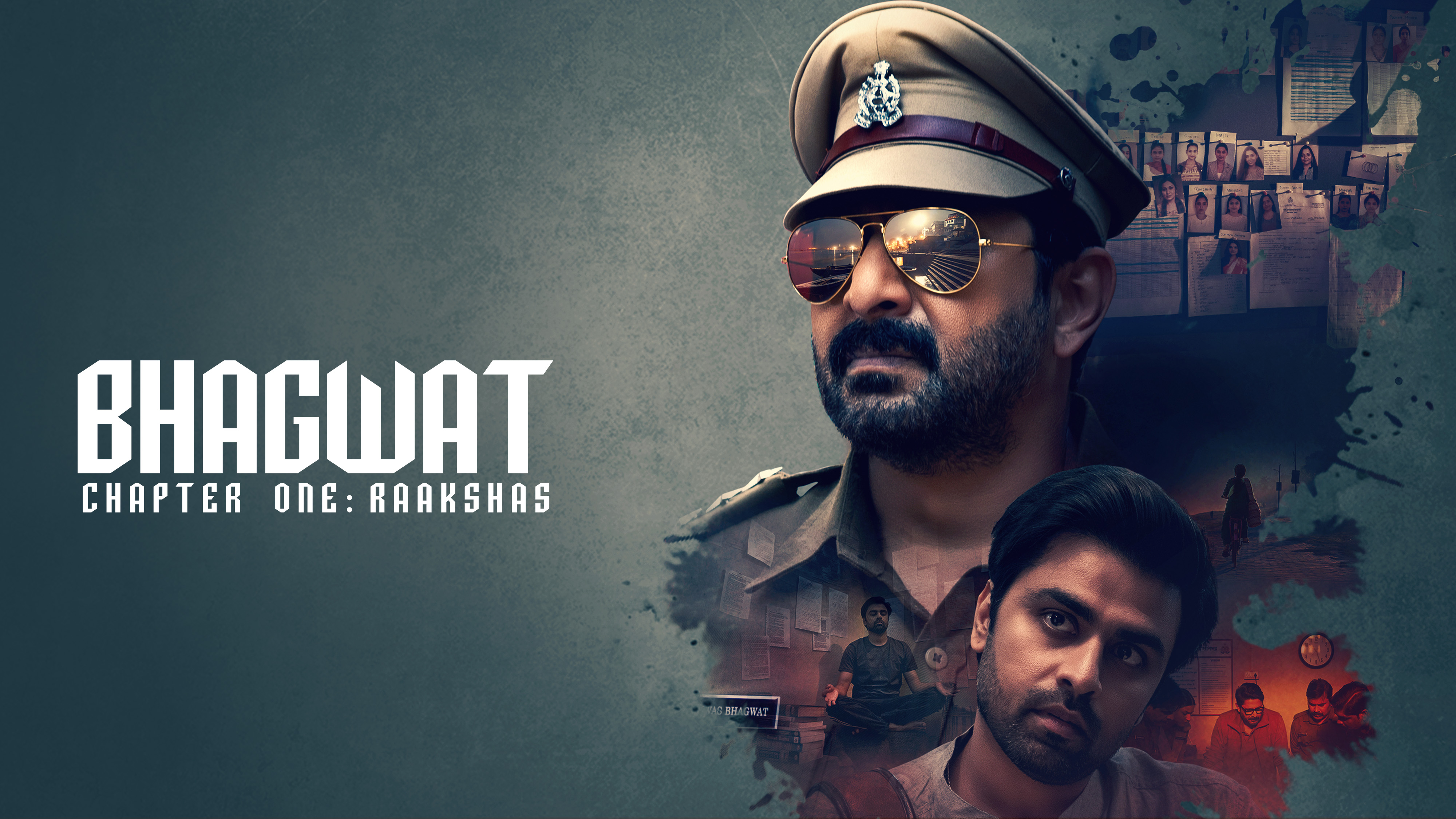Some thrillers sell chaos. Bhagwat does the opposite. It earns tension the hard way—through legwork, silences, and the unglamorous grind of police work in a town that would rather look away. We built this film to reward attention: the half-swallowed word in a witness statement, the stray glance across a crowded corridor, the file that changes hands with just enough hesitation to make you lean in.
If you’re planning tonight’s watch, start with Bhagwat Chapter One: Raakshas and widen your lane only once: browse our Movies hub, hop to Hindi movies, then tune your mood with Thriller movies, and Crime movies—or check what just dropped under new movies. Come back to Bhagwat when you’re ready for a case that builds pressure without raising its voice.
What Bhagwat Is Really About
Disappearances in and around Robertsganj nudge open a door most people prefer to keep shut. Bhagwat follows Inspector Vishwas Bhagwat as he chips through half-truths and small-town hierarchies to find a pattern that refuses to stay buried. The engine here isn’t spectacle—it’s procedure. Interviews start politely and end with a door closing a shade too softly. Each new lead subtly redraws the map. When the picture finally hardens, it feels like the only answer possible, not a trick sprung for applause.
Arshad Warsi’s Inspector: Patience as Pressure
Arshad Warsi plays Bhagwat like the sort of officer colleagues trust and suspect, underestimate. He listens more than he lectures. He counts to five before he asks the hard question. That restraint is the charge; when he finally pushes, the room changes temperature. Warsi’s tool kit is minimal—an arched brow, a measured exhale, a file shut with quiet finality—but in Bhagwat, those small moves carry the weight of a day’s work.
The Counterweight That Keeps You Guessing
Across the table sits uncertainty—cool, composed, and maddeningly hard to read. Bhagwat treats these scenes like chess: eye looks as openings, pauses as traps, exits as moves. You get invited to play along, test your guess against the inspector’s, and feel that great jolt when a simple remark changes an earlier scene with new meaning.
Direction That Trusts the Viewer
Akshay Shere keeps the camera at human height and the score on a leash. No ornamental acrobatics; no violins doing the heavy lifting. Rooms hold their shape. Corridors breathe. The film employs framing and space for emphasis—showing who sits, who stands, who reaches for a glass of water, and who doesn’t. Dialogues stay clean. Subtext does the work. Bhagwat knows that the quickest way to break immersion is to tell you what the image already said.
Robertsganj, Rendered in Lived-In Detail
The city isn’t wallpaper; it’s pressure. Markets have pecking orders; public offices carry the patina of a thousand signatures; doorways remember who crossed them in a hurry last week. Bhagwat demonstrates how power hides in open view—behind process, inside favours, under the comfort of habit. The case becomes tighter. The location resists back when things close in, the streets themselves look like they choose what to expose and what to hide.
Sound That Feels Like Evidence
Small-town nights carry their own music: a distant engine, a scooter gliding past, a dog barking once and thinking better of it. Bhagwat leans into that reality. A chair leg drawn across stone can mean a conversation just ended. A file placed—not dropped—on a table can mean a decision was made two scenes ago. Because the design resists excess, the few sharp notes land with purpose.
Writing and Editing: Process as Plot
The script respects cause and effect. Clues don’t float in like gifts; they arrive because someone looked longer than was convenient. Scenes begin a beat early and end a beat late so you can read what’s unsaid. The cut favours continuity of thought rather than quick-hit rhythm, which means Bhagwat never has to explain its logic—it lets you feel it knitting together.
Why Bhagwat Works (And Who It’s For)
It works because it respects you. Bhagwat assumes you can track shifting motives without prompt cards, that you’ll catch when a witness performs virtue, and that you understand how a single truthful statement can rearrange an entire room. If your taste leans toward grounded Hindi crime—less chase, more consequence—this is your lane. If you enjoy watching actors do more with less, you’ll appreciate how the film builds character with posture, silence, and timing rather than speeches.
How to Watch for Maximum Impact
Give Bhagwat an uninterrupted window. Set audio and subs once. Let the rhythm do its work—interviews that start in courtesy and end in constraint, streets that look ordinary until you learn what they’ve seen, a finale that closes like a well-made lock: click, click, done. When the credits arrive, the aftertaste is earned—the kind that sends you back to two earlier conversations to catch the hint you missed.
Final Word
In a landscape crowded with noise, Bhagwat chooses clarity. It’s a quiet storm—disciplined craft, lived-in places, and a line of inquiry that narrows until denial runs out of room. No shortcuts, no sermonizing, and no need to shout. Just the firm pleasure of watching a case land because someone did the work. That’s why Bhagwat sits confidently on your must-watch list—and why its calm, insistent pulse lingers after the last frame.
Bio of Author: Gayatri Tiwari is an experienced digital strategist and entertainment writer, bringing 20+ years of content expertise to one of India’s largest OTT platforms. She blends industry insight with a passion for cinema to deliver engaging, trustworthy perspectives on movies, TV shows and web series.




